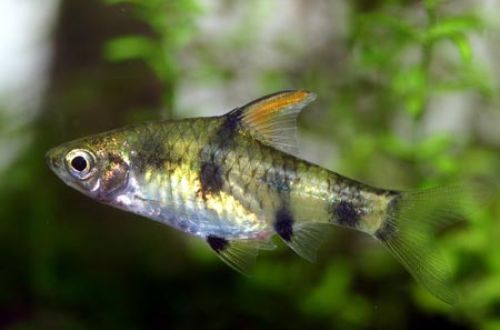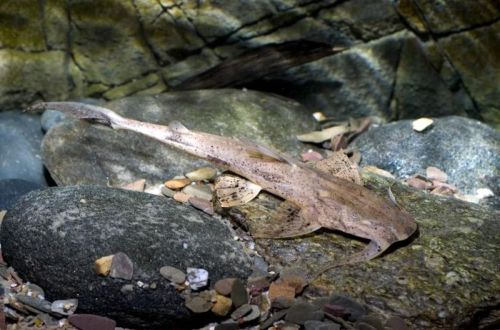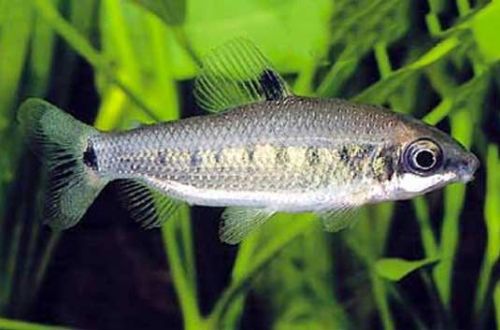
Barbus Canius
Barbus Canius, scientific name Pethia canius, belongs to the Cyprinidae family. The name comes from the Sinhala language, where “Pethia” means “small” and “Canius” is the common name of this fish in the habitats. It was bred into an independent species only in 2013, before that it was considered a variety of Sunny Barbus. Easy to keep and breed, well compatible with other peaceful species of comparable size. May be recommended for beginner aquarists.

Contents
Habitat
It comes from the peninsula of Hindustan from the territory known as Bengal, which is currently divided between India and Bangladesh, and upstream of the Ganges River. Inhabits shallow water bodies, tributaries and slow-flowing backwaters, rich in aquatic vegetation.
Brief information:
- The volume of the aquarium – from 60 liters.
- Temperature – 18-24°C
- Value pH — 6.0–7.0
- Water hardness – soft (1-10 dGH)
- Substrate type – any
- Lighting – subdued
- Brackish water – no
- Water movement – little or no
- The size of the fish is about 3 cm.
- Feeding – any food of suitable size
- Temperament – peaceful
- Content in a group of 10 individuals
Description
Adults reach a length of about 3 cm. The color is golden with a silvery belly and large black strokes all over the body. Outwardly, it is very similar to its closest relative, the Solar Barbus, differs only in the dorsal fin – the first rays of which have a reddish tint, and it is colored yellow. Sexual dimorphism is weakly expressed. It is difficult to distinguish male and female in a flock of fish.
Food
In nature, they feed on small zooplankton, so the presence of live or frozen daphnia, brine shrimp, bloodworms in a home aquarium is welcome. Nevertheless, Barbus Canius will also accept ordinary dry food (flakes, granules) that can become the basis of his diet.
Maintenance and care, arrangement of the aquarium
The optimal size of the aquarium for a small flock of these fish starts from 60 liters. The design uses a large number of plants, including floating ones, various snags and decorative items as shelters. The lighting is subdued.
Successful keeping is possible in stable water conditions with suitable hydrochemical values (pH and dGH) and with regular cleaning of organic waste. Equally important is the presence of a filtration system, especially if the aquarium is heavily populated. When choosing a filter, give preference to those models that do not cause excessive current, as the fish are poorly adapted to life in conditions of strong water movement.
Behavior and Compatibility
Peaceful schooling fish, it is desirable to maintain a group of 10 or more individuals. Compatible with other miniature species. It is worth avoiding a settlement with large fish, especially catfish that can accidentally eat Barbus Canius.
Breeding / breeding
Breeding is similar to other Barbs. With the onset of the breeding season, the females scatter the eggs in the water column, and the males fertilize them at the same time. There is no parental care; moreover, adult fish, on occasion, will gladly feast on their own caviar. The incubation period lasts 24-36 hours, after another 3-4 days the juveniles will begin to swim. It is worth noting that the survival rate of juveniles in the general aquarium will be low. Those fry that are not eaten will have trouble finding suitable food.
If you plan to keep the entire brood, then the eggs or fry that have appeared should be moved to a separate tank with identical water conditions. This kind of spawning aquarium can be equipped with a simple airlift filter with a sponge and a heater. A separate light source is not required. Feed with specialized micro food, brine shrimp nauplii, etc.
Fish diseases
In a balanced aquarium ecosystem with species-specific conditions, diseases rarely occur. Diseases are caused by environmental degradation, contact with sick fish, and injuries. If this could not be avoided, then more about the symptoms and methods of treatment in the section “Diseases of aquarium fish”.





